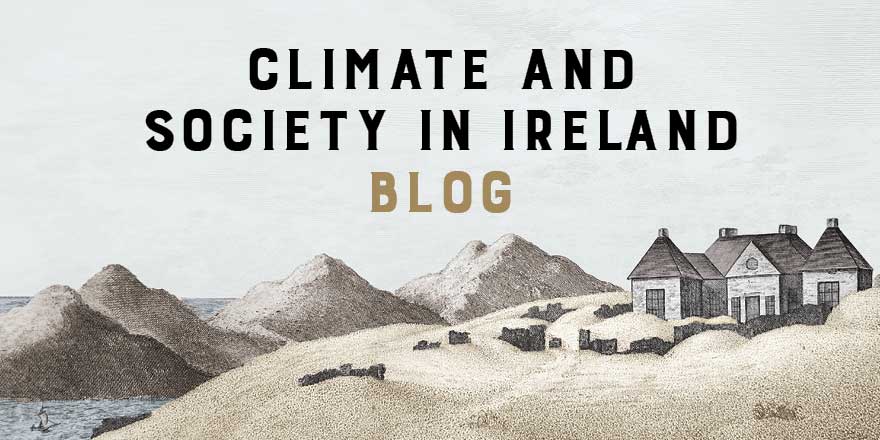
On the brink of Armageddon? Climate change, the archaeological record and human activity across the Bronze Age–Iron Age transition in Ireland
29 September 2021In today's blog on Climate and Society in Ireland, Benjamin Gearey et al. consider the cultural and climatic changes that took place in Ireland during the transition between Bronze Age and Iron Age.
Climate and Society in Ireland is a collection of essays, commissioned by the Royal Irish Academy, that provides a multi-period, interdisciplinary perspective on one of the most important challenges currently facing humanity. In Chapter 5, Benjamin Gearey (University College Cork), Katharina Becker (University College Cork), Rosie Everett (University College Cork) and Seren Griffiths (University of Central Lancashire) consider the ‘2.8 ka BP’, an apparent climatic deterioration implied by palaeoclimatic proxy records from across northwest Europe, and broadly coeval with the Bronze to Iron Age transition in Ireland.
The ‘upheaval’ of Late Bronze Age societies around the eighth century BC has been linked to climate change across northwest Europe, which has in turn been associated with the impact of a decline in solar output dated to 850–550 BC. Evidence for climatic deterioration in later prehistory was first advanced during the late nineteenth and early twentieth century and peat deposits in particular have long provided an important ‘archive’ of climate change. In Ireland, this period has been much discussed, as the archaeological record of the Late Bronze Age to Iron Age transition has also presented an interpretive challenge. The apparent ‘absence’ of an early Iron Age in the archaeological record raised the possibility of a long, drawn out Bronze Age or a gap in human activity in the form of an Iron Age ‘Dark Age’. Climate change has featured prominently in these debates. The evidence for climatic deterioration and archaeological indications of cultural ‘decline’ have often been causally linked, but the ‘climatic impact’ narrative has also been the subject of considerable debate, for various reasons, in particular as many scholars are wary of linking cultural to environmental changes in a manner regarded as ‘environmentally deterministic’.
In this paper we consider these cultural and climatic changes in Ireland in the period long known as ‘the sub-Boreal to sub-Atlantic’ transition, or more recently the ‘2.8 ka Event’. Previous archaeological interpretations of this cultural transition are briefly reviewed, with both environmental and social factors previously invoked as possible drivers of change. This is followed by a consideration of palaeohydrological records from peatlands, in particular bog surface wetness records (BSW), used to identify periods of Holocene climate change, including a cold/wet shift that occurred at c. 750 BC (2.8 ka) and may have had a national signature. Whilst such BSW records provide evidence of relative shifts from wet/cold to warm/dry conditions, quantitative indices of temperature and precipitation cannot be derived from these data and a recent palaeotemperature record does not appear to show especially abrupt changes. The role of ‘bog burst’ events (catastrophic hydrological failures of the physical integrity of peatland) in driving changes in certain Irish BSW records is outlined. Such ‘bog bursts’ can confound the extraction of regional climatic meaning but provide important contextual evidence for human activity and the associated peatland archaeological record, illustrating the importance of understanding ‘non-linear’ responses of bogs to hydrological shifts. A selective review of palynological records demonstrates spatial and chronological variations in vegetation change and human impact across the Late Bronze Age to Iron Age, with possible declines in human activity in some records, although implications for changes in prehistoric human populations are unclear. The paper concludes with a consideration of the importance of robust chronologies for integrating archaeological, palaeoenvironmental and palaeoclimatological data to investigate potential links between climate and cultural change. The importance of different analytical, spatial, and chronological scales to investigate the complex and recursive nature of human activity and climatic change is highlighted.
To continue reading, purchase Climate and Society in Ireland.



